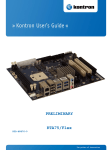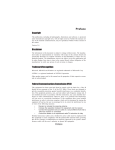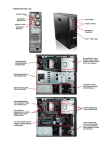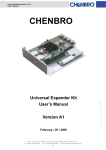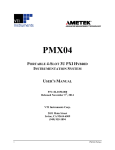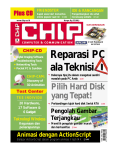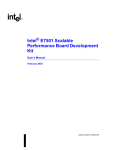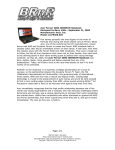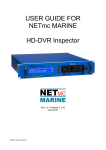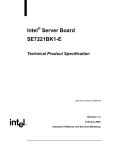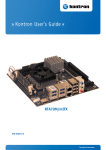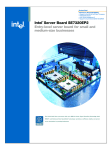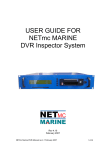Download Endura EM945G Product Manual April 2006
Transcript
Endura EM945G Product Manual w ww .rad i sys . c o m 007-01876-0000 • April 2006 Endura EM945G Product Manual Copyright © 2006 by RadiSys Technology (Ireland) Ltd. All rights reserved. RadiSys is a registered trademark of RadiSys Corporation. Microsoft and Windows are registered trademarks of Microsoft Corporation. Intel, Pentium, and Celeron are registered trademarks of Intel Corporation. Red Hat and Red Hat Linux are registered trademarks of Red Hat, Inc. Linux is a registered trademark of Linus Torvalds. Phoenix is a registered trademark of Phoenix Technologies LTD. All other trademarks, registered trademarks, service marks, and trade names are the property of their respective owners. Preface Preface About This Guide This user manual describes main features and specifications of the Endura EM945G motherboards and instructs how to install and configure the motherboards. Notational Conventions This manual uses the following conventions: • Courier New: Indicates the screen text and syntax strings. • Courier New Italic: Indicates the variable parameters. • All numbers are decimal unless otherwise stated. • Bit 0 is the low-order bit. If a bit is set to 1, the associated description is true unless otherwise stated. Installation Notes When installing this motherboard into a suitable chassis, refer to the following notes: • Read and save all instructions. • Always disconnect Cord/Plug before installation or upgrade. Parts of the motherboard can remain powered even when the power supply is switched off unless the cord is disconnected. • Pay attention to the safety warnings included in this document. • When installing expansion cards, pay attention to the maximum loads detailed in this document. Use only UL approved peripheral cards. • Route wiring away from sharp edges, heat sources and cooling fans. • Pay attention to the thermal issues described in this document. The motherboard requires suitable airflow to maintain an ambient temperature within its operating range. Safety Notices Item Description Battery Danger of the explosion if battery is incorrectly replaced or removed. Replace only with the same or equivalent type recommended by the manufacturer. Dispose of batteries according to the manufacturer's instructions. Do not use a conductive instrument, as a short-circuit may cause the cell to explode. Always replace the cell with one of the same type. This product uses a CR2032 cell. Dispose of a spent cell promptly – do not recharge, disassemble or incinerate. Keep cells away from children. LAN (Local Area Network) Connector This product may include an RJ45 LAN connector (see product options). Do not connect to anything other than an Ethernet LAN. Safety Notices Item Description Thermal Interface Material This product may contain thermal interface material between devices and heat sinks. This can cause irritation and can stain clothing. Avoid prolonged or repeated contact with the skin and wash thoroughly with soap and water after handling. Avoid contact with eyes and inhalation of fumes. Do not ingest. Anti-static Precautions This product contains static-sensitive components and should be handled with care. It is recommended that the product be handled in a Special Handling Area (SHA) as defined in EN100015-1:1992. Such an area has working surfaces, floor coverings and chairs connected to a common earth reference point. An earthed wrist strap should be worn whilst handling. Other examples of static-sensitive devices are the memory modules and the processor. Failure to employ adequate anti-static measures can cause irreparable damage to components on the motherboard. Electromagnetic Compatibility This product is designed to meet the following EMC standards when installed in a suitable chassis. FCC Class B (Title 47 of Code of Federal Regulations, parts 2 & 15, subpart B) EN55022:1998 Class B EN55024:1998 Safety This product complies with the American Safety Standard UL60950 when installed in a suitable chassis. Legal Directives This product complies with the relevant clauses of the following European Directives: Low Voltage Directive: 73/23/EEC EMC Directive: 89/336/EEC Table of Contents Table of Contents 1. OVERVIEW .................................................................................................................. 1 1.1 1.2 1.3 1.4 1.5 1.6 Product Specification Overview........................................................................................1 Motherboard Layout .........................................................................................................3 Block Diagram ..................................................................................................................5 Board Product Ordering Codes and Content....................................................................6 Configuration ....................................................................................................................6 1.5.1 Operation Mode Selection (JP3) ........................................................................7 1.5.2 BIOS Boot Block Write Protect Jumper (JP2) ....................................................8 1.5.3 Clear CMOS Jumper (JP1) ................................................................................8 1.5.4 Front Panel Connector (Header) ........................................................................8 1.5.5 Alternate Power LED..........................................................................................8 RAID function configuration..............................................................................................8 2. MOTHERBOARD DESCRIPTION ............................................................................. 10 2.1 2.2 2.3 2.4 2.5 2.6 2.7 2.8 2.9 2.10 2.11 2.12 2.13 2.14 2.15 2.16 2.17 Supported Processors ....................................................................................................10 System Memory .............................................................................................................10 Chipset ...........................................................................................................................11 2.3.1 945G GMCH ....................................................................................................11 2.3.2 ICH7/7R IO controller.......................................................................................11 Video ..............................................................................................................................13 Disks ..............................................................................................................................13 Audio ..............................................................................................................................14 2.6.1 Audio Channel Allocation .................................................................................14 Network ..........................................................................................................................15 Standard PC I/O .............................................................................................................16 USB Ports.......................................................................................................................16 General Purpose I/O Lines .............................................................................................16 CMOS RAM & RTC........................................................................................................16 Expansion Cards ............................................................................................................17 System management .....................................................................................................17 2.13.1 Voltage Monitoring ...........................................................................................17 2.13.2 Temperature Monitoring...................................................................................18 2.13.3 Fan Monitoring .................................................................................................18 2.13.4 Fan Control ......................................................................................................18 2.13.5 Tamper Detection.............................................................................................18 Power management .......................................................................................................19 2.14.1 ACPI Power States ..........................................................................................19 2.14.2 ACPI Wake-up Support....................................................................................19 Power State Indicators ...................................................................................................20 BIOS...............................................................................................................................20 Operating Systems Support ...........................................................................................20 3. SPECIFICATIONS ..................................................................................................... 22 3.1 3.2 3.3 Environmental ................................................................................................................22 Thermal ..........................................................................................................................23 Regulatory EMC Compliance .........................................................................................23 Table of Contents 3.4 3.5 3.6 3.7 3.8 Regulatory Safety Compliance .......................................................................................23 Industry Compliance.......................................................................................................24 Miscellaneous Specifications..........................................................................................24 Mechanical .....................................................................................................................24 3.7.1 Motherboard.....................................................................................................24 3.7.2 I/O Shield .........................................................................................................25 3.7.3 Heatsinks .........................................................................................................25 Electrical.........................................................................................................................26 3.8.1 Motherboard Power Consumption....................................................................26 3.8.2 Power Delivery to Expansion Slots ..................................................................27 3.8.3 Power Supply Selection ...................................................................................28 4. APPENDICES ............................................................................................................ 29 4.1 4.2 Industry Standard References........................................................................................29 Connector Descriptions ..................................................................................................29 4.2.1 Connector Part Numbers .................................................................................29 4.2.2 Connectors for Internal Devices .......................................................................33 4.2.3 External Device Ports.......................................................................................38 Overview 1. Overview The EM945G motherboard is part of the RadiSys® Endura product line, which specifically targets at the embedded markets and applications with a lifetime of five years, including transaction terminals, medical equipments, test and measurement, gaming, industrial automation, enterprise systems, and so forth. Products are fully revision controlled and any change to form, fit or function will be conveyed via Product Change Notification. 1.1 Product Specification Overview Main Board EM945G Form Factor uATX, 9.6” x9.6”, 4 expansion slots Processor ® Support for Intel processors in an LGA775 socket with bus speeds of 1066MHz, 800MHz and 533MHz Chipset Intel 945G GMCH + Intel ICH7/ICH7R, depending on the product SKU Memory • Two Channel DDR2 400/533/667 • Support 2 DDR DIMMs (3.24GB maximum available memory) System BIOS Feature • FWH-4Mb (wake on LAN boot) • Phoenix Award BIOS code • ACPI supported, S1 default • Hardware monitor supported Super I/O ® Winbond PC8374L Hardware Monitor RTC NS LM96000CIM Battery Cell Battery, Coin Lithium, 3.0V, 220mAh, CR2032 IDE Interface • PCI Bus master enhanced IDE (ICH7R/ICH7) Intel ICH7/ICH7R (Selected Boards) • Single Ultra ATA 100/66/33 interface supporting hard disks and ATAPI drives Serial ATA • Independent DMA operation on 4 ports • Data transfer rates up to 300Mbps Audio LAN USB Audio on board with Intel HD Audio interface operation option, using SIGMATEL STAC9200 Dual Intel 82573L controllers or single 82562GZ PHY USB 2.0 Host Controller that totally supports up to 8 ports: • Rear: One dual stack and one dual stack w/ RJ-45 LAN • Front: 1x5 header x4 Expansion slots • Slot 1: PCI Express x1Slot • Slot 2: PCI Slot • Slot 3: PCI Riser Slot • Slot 4: PCI Express x16 Slot 1 Product Specification Overview I/O Ports Rear I/O: PS/2 keyboard and mouse; Analog VGA; Bi-directional/EPP/ECP parallel port; COM1 RS232; One or two dual USB + RJ45 stacks; Audio jack stack (2 jacks) Header; Connectors: • USB; MIC-IN; LINE-OUT; LINE-IN; • GPIO 2 x 10 pin with housing • SMbus 1 x 4 pin with housing • COM2 2 x 5 pin with housing • Kbd/Mouse 1 x 4 pin with housing • Remote sensor 1 x 2 pin with housing • FDD 1 x FDD connector Power Connectors Power Management System Management 24 Pin ATX power connector and 8 Pin ATX_12V connector Dark Green, ACPI 2.0 compliant, SMBIOS 2.3, PC99 Spec. Voltage, temperature and fan monitoring (3 fans) Lithium cell voltage monitoring Automatic fan speed control (3 fans) SMBus header Security Header for TPM 1.2 compliant module 2 Overview 1.2 Motherboard Layout The following figure shows the layout of the EM945G motherboard with the major components identified. Figure 1. 3 Motherboard Layout and Component Identification Motherboard Layout Item Description Item Description Item Description 1 Serial port 2 header 20 Back panel USB 2.0 port 5 39 USB port 6 header 2 Super IO 21 Back panel USB 2.0 port 7 40 I/O controller hub (ICH7/7R) 3 Memory DIMM sockets (2) 22 Giga or 10/100 Ethernet port (RJ45) 41 Front panel header 4 CPU FAN connector 23 Microphone input jack 42 SATA connectors 5 GMCH 24 Audio line output jack 43 TPM header 6 775-pin socket for processor 25 PCI Express x16 slot 44 System fan connector 7 Clock generator 26 Giga or 10/100M Ethernet controller 45 Chassis fan connector 8 Giga Ethernet controller (optional) 27 PCI Riser slot 46 Speaker header 9 PS/2 mouse header 28 PCI slot 47 Operation Mode Jumper 10 12V power connector 29 HD Audio CODEC 48 BIOS ROM jumper 11 PS/2 keyboard header 30 Stereo audio (CD) line input header 49 Clear CMOS Jumper 12 PS/2 mouse (green) 31 Stereo audio line output header 50 RTC battery 13 PS/2 keyboard (purple) 32 Stereo audio (microphone) input header 51 Buzzer 14 Serial port 1 33 SMBus header 52 Remote thermal sensor 15 Parallel port 34 PCI Express x1 slot 53 IDE connector 16 VGA monitor 35 BIOS ROM (FWH) 54 GPIO header 17 Giga Ethernet port (RJ45) (optional) 36 USB port 0 header 55 Primary power supply connector 18 Back panel USB 2.0 port 1 37 USB port 2 header 56 FDD connector 19 Back panel USB 2.0 port 3 38 USB port 4 header 4 Overview 1.3 Block Diagram The following figure shows a block diagram of the EM945G motherboard: Figure 2. Block Diagram Prescott, Tejas Pentium 4 EE LGA775 processor VRD 10.1 4 Phase PWM Socket T CK-410 Clock 1066/800/533 FSB CRT 400/533/667MHz Channel A DDR-2 DIMM1 400/533/667MHz Channel B DDR-2 DIMM2 VGA PCIEx16 Port PCI-E X16 Slot GMCH Lakeport Back Panel USB2.0 Port 1 USB2.0 Port 2 4 Lanes Direct Media Interface (DMI) USB2.0 Port 3 USB2.0 Port 4 PCIE x1 Interface PCI-E X1 Slot USB2.0 Front Panel PCIE x1 Interface USB2.0 Port 5 USB2.0 Port 6 Intel 82573L PCIE x1 Interface USB2.0 Port 7 Intel 82573L USB2.0 USB2.0 Port 8 ATA ATA100 PCI Interface PCI Slot 1 IDE CONN 1 Keyboard Mouse SUPER I/O NS PC8374L LPC ICH7/7R PCI Riser Slot 1 SATA Serial ATA SATA Serial ATA SATA Serial ATA SATA Serial ATA Port 1 Serial Port1 Port 2 Serial Port2 Port 3 Parallel Floppy GPIO Header 5 FWH Flash BIOS 4Mb Port 4 High Definition Audio Azalia Codec STAC9200 Board Product Ordering Codes and Content 1.4 Board Product Ordering Codes and Content The following product codes and content are available and are subject to change. 1.5 Function EM1W03-0-0 EM2G03-0-0 Chipset Intel 945G Intel 945G Intel ICH7 Intel ICH7R Processor LGA775 LGA775 LAN 10/100 10/100/Gbit LAN remote boot Yes Yes LAN wake-up Yes Yes Audio HDA, 2 jacks, 3 headers HDA, 2 jacks, 3 headers Watchdog Yes Yes Analog VGA Via VGA port Via VGA port IEEE 1394b No No Enhanced programmable controller No No Installed processor No No Installed memory No No Configuration The majority of the configuration of the motherboard is done through the Setup utility built into the BIOS. There are, however, a number of jumpers that control the operation of the motherboard as described below. Some jumpers are not fitted to certain products. 6 Overview Figure 3. Jumpers JP1 JP3 Normal Normal Configure Clear COMS Recovery JP2 BIOS boot block Lock BIOS boot block Unlock 1.5.1 Operation Mode Selection (JP3) This JP3 selects one of these operating modes for the motherboard: 7 Normal Mode (Factory default) Jumper installed between pin1&2. This is the position the jumper should be in for normal operation of the motherboard. Recovery Mode With no jumper installed, the recovery mode is entered. The motherboard does not boot and waits until a valid recovery diskette is detected and then copies new BIOS into the ROM. The motherboard must be powered down and then repowered with the jumper in the normal position. Configure Mode With the jumper in this position (jumper installed between pin 2&3) the motherboard automatically runs the BIOS Setup utility regardless of the state of the Setup disable flag that can be set in the BIOS defaults. In this mode, the CMOS RAM contents are ignored and the defaults are used to configure the motherboard. RAID Function Configuration BIOS Boot Block Write Protect Jumper (JP2) 1.5.2 A jumper installed between pins 1 & 2 (factory default), or no jumper installed, enables changes to contents of BIOS ROM boot block (unlocked position). Some motherboard applications may want to have boot block write-protected BIOS. This can be provided via the BIOS boot block write protection jumper facility. If a jumper is installed between pins 2 & 3 (locked position), the contents of BIOS ROM boot block cannot be changed in any way. Clear CMOS Jumper (JP1) 1.5.3 Installing a jumper between pins 1 & 2 clears (resets) the CMOS. A jumper installed between pins 2 & 3 (factory default), or no jumper installed, is the normal operating configuration. Front Panel Connector (Header) 1.5.4 The primary controls and indicators for the motherboard are connected via the front panel connector, also called front panel header, using either a single ribbon cable to a front panel assembly, or using a number of small PC-standard connectors. Power LED Connects either a single-color LED (usually green) or a two-terminal bi-color LED (usually green/yellow) to indicate the powered status of the motherboard. In both cases, the ‘green’ anode should be attached to pin 2 of the front panel connector. See the Indicators section later in this document for further information. Power Switch If the motherboard is used with a soft-switch power supply, a momentary switch should be connected between pins 6 and 8 of the power connector. If the switch is closed for greater than approximately 4 seconds, the motherboard powers off immediately, regardless of the state of the operating system, losing any system context information. This input is redundant when using a hard-switch power supply. Reset Switch If used, a momentary switch connected between pins 5 and 7 will cause the motherboard to restart when closed. Hard Disk LED To indicate hard disk activity on either of the two ATA channels, a single color LED should be connected between pins 1 (anode) and 3. Speaker Connect an external speaker between pins 10 and 12 or 10 and 16. This is used only for the PC beep functions. The speaker should typically be 8Ω. Tamper Switch To make use of the tamper detection logic of the motherboard, connect a momentary switch between pins 18 and 20. The switch should be open when the chassis is closed. 1.5.5 Alternate Power LED The power LED function on the front panel connector is duplicated on the Alternate Power LED connector for use with LEDs cabled to a 3-pin connector. Do not use both the primary (front panel) and alternate connectors simultaneously. 1.6 RAID Function Configuration Selected boards provide support for RAID 0, 1, 5, 10 via the ICH7R RAID controller. To configure the RAID function, do the following: 1. Enter the BIOS Setup screen, select Integrated Peripherals, and then OnChip IDE Device. Set the SATA mode to RAID, and then save the changes and exit. 8 Overview 2. Intel Matrix Storage Manager Option ROM is integrated in all the system BIOS supporting Intel chipsets. When system starts POST, showing Intel Matrix Storage Manager Option ROM screen, press Ctrl + I to enter the RAID configuration utility Intel RAID for Serial ATA screen optional items. On the main menu, you can create or delete the RAID volume as needed, and then save the changes and exit. 3. Reboot from CD ROM. When the system prompts you whether to install third party SCSI or RAID driver appears, press F6 to install RAID driver. Insert Intel IAA RAID XP Driver for ICH7R (NH82801GR) into disk A, and then press Enter to continue the installation. 9 Supported Processors 2. Motherboard Description 2.1 Supported Processors The EM945G motherboard supports Intel® Pentium® D, Pentium 4, and Celeron® D processors in a 775-pin LGA socket. The following table lists some of the currently supported processors. For more information about the supported processors and technical support, visit the RadiSys Web site at www.radisys.com. Processor Type Processor Speed CPU Bus Speed Cache Size Pentium D, 830 3.00 GHz 800 MHz 2MB Pentium D, 820 2.80 GHz 800 MHz 2MB Pentium 4, 670 3.80 GHz 800 MHz 2MB Pentium 4, 651 3.40 GHz 800 MHz 2MB Pentium 4, 551 3.40 GHz 800 MHz 1MB Pentium 4, 541 3.20 GHz 800 MHz 1MB Celeron D, 351 3.20 GHz 533 MHz 256 KB Celeron D, 341 2.93 GHz 533 MHz 256 KB Celeron D, 340J 2.93 GHz 533 MHz 256 KB NOTE An on-board voltage regulator generates the voltage for the CPU. Both the processor voltage and the operating frequency are automatically adjusted by the motherboard to suit the installed processor. 2.2 System Memory The GMCH integrates a system memory DDR2 controller with two, 64-bit wide interfaces. The memory controller interface is fully configurable through a set of control registers. Features of the GMCH memory controller include: • Maximum supported memory size is 4 GB, with maximum useable memory of approximately 3.24 GB. • Directly supports one or two channels of memory (each channel consisting of 64 data lines) • The memory channels are interleaved: Addresses are ping-ponged between the channels after each cache lien (64-B boundary). • Supports DDR2 533, and DDR2 667 • Available bandwidth up to 5.3Gbps (DDR2 667) for single-channel mode or dualchannel asymmetric mode and 10.7Gbps (DDR2 667) in dual-channel Interleaved mode • Supports DDR2 memory DIMM frequencies of 533MHz, and 667MHz. The speed used in all channels is the speed of the slowest DIMM in the system. • Supports 256-Mb, 512Mb, and 1Gb DDR2 technologies for x8 and x16 device. • Supports four banks for all DDR2 devices up to 512-Mbit density. Supports eight banks for 1-Gbit DDR2 devices. 10 Motherboard Description • DDR2-667 1Gbit technology or DDR2-667 4-4-4 is not supported. • Supports only un-buffered DIMMs. • Supports opportunistic refresh. • In dual channel mode, the (G) MCH supports 32 simultaneously open pages. • Supports the Serial Presence Detect (SPD) scheme for DIMM detection. • Supports Suspend-to-RAM via CKE. • Supports configurations defined in the JEDEC DDR2 DIMM specification only. • Directly supports two channels of non-ECC DDR2 DIMMs. • Supports Partial Writes to memory using Data Mask (DM) signals. • Supports a burst length of 8 for single-channel and dual-channel interleaved and asymmetric operating modes. • Supports Enhanced Memory Interleave. NOTE When using the on-board video controller, the frame buffer is held within system memory and less memory is available to the operating system. 2.3 Chipset The motherboard is based on the Intel 945G chipset with the ICH7 or ICH7R I/O controller. 2.3.1 945G GMCH The primary role of a GMCH in a system is to manage the flow of information between its interfaces: the processor interface (FSB), the system memory interface (DRAM controller), the integrated graphics interface (82945G GMCH only), the external graphics interface (PCI Express), and the I/O Controller through DMI interface. This includes arbitrating between the four interfaces when each initiates transactions. The GMCH supports one or two channels of DDR2 SDRAM. The GMCH also supports the PCI Express based external graphics attach. To increase system performance, the GMCH incorporates several queues and a write cache. The GMCH also contains advanced desktop power management logic. The device package is a 1202 Flip Chip Ball Grid Array (FCBGA). 2.3.2 ICH7/7R IO Controller The ICH7/7R provides extensive I/O support. Functions and capabilities include: PCI Express 11 • 4 PCI Express root ports • Fully PCI Express 1.0a compliant • Support for full 2.5Gbps bandwidth in each direction per x1 lane • Two virtual channel support for full isochronous data transfers Chipset PCI Bus Interface • Supports PCI Rev 2.3 Specification at 33 MHz • Support for 64-bit addressing on PCI using DAC protocol Integrated Serial ATA Host Controllers • Four ports • Data transfer rates up to 3.0Gbps (300 Mbps) • Integrated AHCI controller (ICH7R products only) Integrated IDE Controller • Independent timing of up to two drives • Ultra ATA/100/66/33, BMIDE and PIO modes Intel High Definition Audio Interface • Supports multimedia channel, 32-bit sample depth, 192kHz sample rate output • AC-Link for Audio and Telephony Codec Integrated LAN Controller • Integrated ASF Management Controller • WfM2.0 and IEEE802.3 Compliant • LAN Connect Interface (LCI) • 10/100Mbps Ethernet Support Power Management Logic • ACPI 2.0 compliant • ACPI-defined power states (S0, S3-S5, C0, C1) External Glue Integration • Integrated Pull-op, Pull down and Series Termination resistors on IDE, processor I/F • Integrated Pull-down and Series resistors on USB Enhanced DMA Controller • Two cascaded 8237 DMA controller, • Supports LPC DMA 12 Motherboard Description SMBus • Supports SMBus 2.0 Specification • Host interface allows processor to communicate via SMBus High Precision Event Timers • Advanced operation system interrupt scheduling • Timers Based on 82C54 • System timer, Refresh request, Speaker tone output Real-Time Clock • 256-byte battery-backed CMOS RAM Interrupt • Interrupt Controller • Supports up to eight interrupt pins • Supports PCI 2.3 Message Signaled Interrupts TPM1.2 • 2.4 2.5 Support for Security Device (Trusted Platform Module) connected to LPC Video • Integrated Intel GMA950 video controller: Intel IPD group Embedded Graphics or GMA (Extreme) drivers and video BIOS • Analog RGB output with DDC2B: Graphics resolution up to 2048 x 1536 pixels with 32-bit color support at 75Hz 15-pin D-sub connector support • Supports PCI-E graphics cards and ADD2 cards Disks 13 • Four 300Mbps SATA ports with locking headers • One Ultra ATA/100 interface via on-board 40-way boxed header • 40/80-pin cable host-side detection or forced in BIOS • Support for hard disks and ATAPI drives • BIOS support for 48-bit LBA (ATA drives >137GB) • Support for USB drives including boot • Support for RAID 0, 1, 5, 10 by ICH7R as RAID controller (Only SKU with ICH7R) Audio 2.6 Audio The motherboard audio system comprises the chipset ICH7(R) digital audio controller and SigmaTel STAC9200 audio CODEC with Intel High Definition (HD) Audio compatible mode. • ATAPI 1: Line input connector (black) On-board ATAPI connectors • ATAPI 2: Stereo AUX/MIC input connector (white) • ATAPI 3: Stereo Line output connector (yellow) Two I/O panel 3.5mm plug and Default connections include: play audio jacks • Stereo microphone input (with support for microphone bias) • Stereo Line output with headphone drive capability On-board PC beeper Figure 4. 2.6.1 Audio Jack Socket and ATAPI Connectors (Optional) Line in ATAPI 1 Line out ATAPI 3 Line out MIC in ATAPI 2 MIC in Audio Channel Allocation Connector type I/O panel jack I/O panel jack color Pink Internal header Lime ATAPI header color Nominal function Microphone Line In capability X Headphone out capability Black* White Yellow Line In Microphone Line out X X Line Out capability Microphone capability Line Out Blue* X X X X The standard configuration is a 2 jack external connector. If a 3 jack external connector is needed, an option could be made available, for which the added blue jack would be Line In, displacing the Line In black internal header (deleted) on the standard configuration. The internal headers do not support plug and play (jack sensing). TIP It is possible to use both header and I/O panel jack at the same time when configured as a LINE output but this can affect drive levels depending on the load impedance. 14 Motherboard Description 2.7 Network Either one or two IEEE 802.3 compatible Ethernet ports are available as build options that are based around Intel controllers 82573L or 82562GZ to provide 10/100/1000Mbps or 10/100Mbps configurations. Connection to the network is achieved through two RJ45 connectors, available on the rear panel, which have integral LEDs to provide Link status information. 10/100/1000 BASE-T Gigabit Ethernet Controller (Intel 82573L) • Uses x1 PCI-Express on ICH7/7R • Peak bandwidth 2Gbps per direction • PCI-Express power management • Optimized transmit and receive queues • IEEE802.3x compliant flow control support with software controllable pause times and threshold values • Integrated PHY for 10/100/1000 Mbps full and half duplex operation • Advanced packet filtering • Intel Active Management Technology • Supports ASF 1.0 and 2.0 alerting • Supports Wake On LAN (WOL) and ACPI • Programmable LED functionality • Loop-back capabilities • IEEE 802.3ab Auto-Negotiation support 10/100BASE-TX Fast Ethernet Controller (Intel 82562GZ) 15 • IEEE 802.3 10BASE-T/100BASE-TX compliant physical layer interface • IEEE 802.3u Auto-Negotiation support • Digital Adaptive Equalization control • Link status interrupt capability • 3-port LED support (speed, link and activity) • 10BASE-T auto-polarity correction • LAN Connect interface • Alert on LAN Functionality, ASF 1.0 alerting • Diagnostic loop-back mode • 1:1 transmit transformer ratio support • Low power (less than 300 mW in active transmit mode) • Reduced power in unplugged mode (less than 50 mW) • Automatic detection of unplugged mode Standard PC I/O 2.8 Standard PC I/O The rear I/O ports include: • PS/2 keyboard and mouse • Analog VGA • Bi-directional/EPP/ECP parallel port • COM1 RS232 • One or two dual USB + RJ45 stacks • Audio jack stack (2 jacks) Figure 5. 2.9 2.10 Rear I/O Connectors USB Ports • Four USB 2.0 ports on I/O panel via two dual stacked USB over RJ45 connectors • Four USB 2.0 ports on internal locking headers General Purpose I/O Lines To support products that require a small number of internal input or output lines (such as switches or LED indicators), the motherboard provides access to 13 general-purpose lines by a 20-pin header. 13 lines can be programmed as inputs or outputs. It is the responsibility of the customer to provide suitable software to control these lines. For detailed pin definition, please refer to the appendix ‘General Purpose I/O headers’. 2.11 CMOS RAM & RTC The chipset integrates real-time clock (RTC) and 256 bytes of CMOS RAM that is used by the BIOS to store configuration information. A replaceable primary lithium “coin cell” battery (type CR2032) backs up both the RTC and the CMOS RAM, and provides approximately 5 years of un-powered backup. When available, the RTC and CMOS RAM are powered from the +3.3V standby power rather than the lithium battery cell. The system management hardware can monitor the lithium cell voltage directly. 16 Motherboard Description 2.12 Expansion Cards The motherboard provides two bus-master 5V PCI 2.3 compliant slots, one PCI Express x1 slot, and one PCI-E x16 slot. The motherboard generates the 3.3Vaux supply to these slots using the 5V standby input from the power supply. Always ensure that the 5V standby rail can support the required current when using a PCI card that makes use of the 3.3Vaux supply. Figure 6 shows the slot layout of EM945G board. PCI-E X1 is the PCI Express x1 slot. PCI_SLOT1 and PCIRISER_SLOT1 are the PCI 2.3-compliant 5V 33MHz 32bit slots. PCI Express (x16) graphic cards and ADD2 cards are supported at PCI-E x16 slot. Figure 6. EM945G Board Slot Layout Processor PCI-E x16 2.13 Riser PCI PCI-E x1 System Management The motherboard includes hardware system management functions by the National Semiconductor LM96000 device. They monitor system voltages, motherboard, processor and external temperatures, fan speed and control system fans. The following sections describe this in detail. 2.13.1 Voltage Monitoring The following table details the motherboard voltage rails monitored and their usage. Voltage Rail Usage on Motherboard +12V Fans, expansion slots +5.0V Processor voltage regulator, internal voltage regulator for chipset and system memory, internal logic, USB and video ports, expansion slots VCPU Processor core voltage VBAT This internal rail is used to power the RTC and the CMOS RAM The processor voltage regulator generates the operating voltage automatically based on the processor voltage requirement indicated by the processor by the VID pins. The VID 17 System Management can be read by the control logic General Control and Status register (VID-5) and the System Management Controller (LM96000) on the SMBUS (VID0-4). 2.13.2 Temperature Monitoring There are three thermal monitors, two of which connect to temperature sensors on the motherboard. The first measures the motherboard temperature using a sensor contained within the LM96000. This is a localized reading dominated by the motherboard surface temperature around the component. The second temperature sensor is located on the processor die and thus accurately measures the local die temperature. Since the local die temperature fluctuates rapidly with activity, the controller within the LM96000 filters the signal to produce an average temperature. NOTE There is temperature deviation across the processor die that cannot be observed by this sensor. Intel provides information on this in the processor datasheet. A third sensor can be connected to the motherboard using the external sensor connector. The sensor should be a silicon diode or transistor connected as a diode, such as a Fairchild MMBT3904. 2.13.3 Fan Monitoring The motherboard supports three fan monitors that check the fan tachometer signals to determine the rotational speed. Fan speeds can be monitored by software to provide early warning of a failing fan, indicated by a slower than normal rotational speed. NOTE When a fan is temperature controlled, the speed is determined by the control mechanism and the fan will sometimes be intentionally slowed or stopped – monitoring software must accommodate this. The three fan tachometer monitors are assigned to the fans as follows: Fan Monitor Usage by motherboard Fan monitor 1 Processor fansink (see motherboard layout section) Fan monitor 2 System fan (see motherboard layout section) Fan monitor 3 System fan (see motherboard layout section) 2.13.4 Fan Control The motherboard supports individual variable speed controls for the processor fansink and the two system fans by pulse-width modulation of the fan drive output voltage. In addition to direct software control, the LM96000 supports automatic fan control based on the temperature indicated by the three thermal sensors. Each sensor defines a thermal zone and the fans can then be independently assigned to these zones. Parameters defining PWM frequency, temperature range, spin-up delays etc. are programmed into the LM96000 to enable automatic control. The default parameter set programmed by the BIOS can be customized. 2.13.5 Tamper Detection The motherboard supports tamper detection security that operates by a chassis tamper switch connected to the front panel connector. When the motherboard detects this signal low the BIOS can be configured to display a warning message or to require a password at the next boot. Since the lithium cell powers the logic, the tamper detection continues to operate even if the board is un-powered. 18 Motherboard Description 2.14 Power Management The EM945G motherboard implements a number of power management features via ACPI. 2.14.1 ACPI Power States • Supports ACPI 2.0 with power states S0, S3, S4 (not S4BIOS), S5 and C0, C1 • Supports PCI PME and PCI Express power management event signaling The following table shows the ACPI power states: G0/S0/C0 Full on G0/S0/C1 Processor is halted G1/S3 System context is saved to RAM and power removed from all circuits except that required to maintain system RAM and resume System context is saved to disk and power removed from all circuits G1/S4 except that required to resume Soft off, only resume logic and RTC remain powered G2/S5 2.14.2 ACPI Wake-up Support The following table indicates which events can cause an ACPI wake-up and from which sleep states: Wake-Up Event From ACPI State BIOS setting 1 BIOS setting 1 Power button S1, S3, S4* , S5 RTC alarm S1, S3, S4* , S5 LAN S1, S3, S4* , S5 BIOS setting 1394B S1, S3 BIOS setting USB S1, S3 BIOS setting 1 PCI S1, S3, S4* , S5 Via PME# signal PS/2 S1, S3 BIOS setting Serial port S1, S3, *S4, S5 S4 and S5 support External Modem only 1 * S4 implies OS support only (Win 2000, Win XP) 19 Note 1 Power State Indicators 2.15 Power State Indicators The motherboard supports a single dual-color LED indicator that shows power status. It is possible to use a single-color LED although some functionality is lost. The following table describes how the indicator is driven when operating with both single and dual-color devices and assumes 5V standby power is available. LED State Description Single color OFF The motherboard is powered down or in one of the ACPI sleep states (including S1). ON The motherboard is fully powered up (S0). Blinking The motherboard is fully powered up (S0) with a message waiting (as determined by ACPI TAPI). OFF The motherboard is powered down or in ACPI sleep states S4 or S5 (no +5V supply available) Green The motherboard is fully powered up (S0). Yellow The motherboard is in sleep state S1. Blinking green The motherboard is fully powered up (S0) with a message waiting (as determined by ACPI TAPI). Blinking yellow The motherboard is in sleep state S1 with a message waiting (as determined by ACPI TAPI). Dual Color (Green /Yellow) 2.16 BIOS The standard BIOS for EM945G board should follow the latest specific Intel 945G chipset platform BIOS PRD for this product. 2.17 • Based on Phoenix Award BIOS • 4Mbit firmware hub BIOS ROM • System and (Intel) video BIOS • Intel Ethernet remote boot and PXE code • Fully customizable including video BIOS • ROM can be optionally socketed with write-protect support • Silent boot (boot message hiding, logo visible), headless operation support • All configuration is automatic - no stopping on configuration change • Resources freed when unused Operating Systems Support The following operating systems are validated by RadiSys with the EM945G motherboard. • Windows XP Professional SP2 • Embedded Windows XP Server SP2 • Red Hat Enterprise Linux 4.0 AS 20 Motherboard Description • Knoppix Linux 3.7 • Windows 2000 Server SP4 • SUSE Linux Enterprise Server 9.0 Contact RadiSys for information on the support of other operating systems. For device drivers, see the Manuals, Drivers & BIOS section on www.radisys.com. 21 Environmental 3. Specifications The following sections specify the conditions required for correct operation of the motherboard, usage information and regulatory and industry compliance statements. Failure to operate the product within its specification can result in system failures or reduce product lifetime. 3.1 Environmental The following table details the environmental operating limits and the calculated product reliability data: Characteristic State Value Temperature (ambient) Operating 0oC to +55oC Relative humidity Vibration Operation above +30° C reduces the maximum operational relative humidity. Operating gradient ±5°C per minute Storage -40oC to +85oC, 5°C per minute maximum excursion gradient. Operating 10% to 85% RH non-condensing at +30oC, linearly o decreasing to 5% to 15.5% RH non-condensing at +65 C. Storage o 5% to 90% RH non-condensing at +40 C. Operating Random 5Hz to 2kHz, 7.7grms, 10 mins in each of 3 axes 5Hz to 20Hz: 0.004g2/Hz ramping up to 0.04g2/Hz; 20Hz to 1000Hz: 0.04g2/Hz; 1000Hz to 2000Hz: 0.04g2/Hz ramping down to 0.01g2/Hz Packaged Random 5Hz to 2kHz, 9.7grms, 10 min. in each of 3 axes 5Hz to 20Hz: 0.006g2/Hz ramping up to 0.06g2/Hz; 20Hz to 1000Hz: 0.06g2/Hz; 1000Hz to 2000Hz: 0.06g2/Hz ramping down to 0.02g2/Hz Sine 5Hz to 500Hz, 0.15 octave/min up and back, 10 min. dwell at 3 resonances in each of 3 axes 5 to 50Hz swept – 0.1g; 50 to 500Hz swept – 0.25g Shock Altitude Non-Operating 30g 11ms, half-sine Packaged Drop test, 10-up bulk packaging, 30 inches free-fall, 152 inches/s velocity change Operating To 15000 ft. (4500m) Storage To 40000 ft. (12000m) 22 Specifications 3.2 Characteristic State Value MTBF MTBF (hr) predictions for the EM945G products are as follows: SKU 55°C 35°C EM1W00-0-0 148,730 303,859 EM2G00-0-0 145,334 296,203 Airflow Base on standard Intel guidelines Fuses Self-resetting PTC fuse (fuses automatically reset without user intervention once the load had been removed) Thermal The ambient operating temperature range for the motherboard is 0 to 55°C, but the selection of processor and heatsink (fansink) can reduce the system operating range. The processor and heatsink combination normally supplied as standard with the motherboards are tested by RadiSys to the full operating range, using software designed to cause maximum power dissipation in the processor. The test has been done in an environmental test chamber with forced-air circulation. The maximum operating temperature of the supplied processor and heatsink combination is specified in the Endura Processor Support documentation, available on the RadiSys Web site, Support & Service page. WARNING Always test the final system configuration to determine if the operating temperature range limits for the motherboard and processor are being met. Failure to do so can lead to unstable operation, motherboard or processor damage and/or shortened life. 3.3 Regulatory EMC Compliance When correctly installed in a suitable chassis, the EM945G motherboard is designed to meet these EMC regulations: 3.4 • CISPR 22: 1998, Class B • EN55022, EN55024 • FCC Class B Regulatory Safety Compliance When correctly installed in a suitable chassis, the EM945G motherboard is designed to meet these safety regulations: 23 • UL60950, CSA60950, EN60950, IEC60950 • CB report to IEC60950-1 with all deviations • Accessory listing from UL to UL60950-1 Industry Compliance 3.5 Industry Compliance The EM945G motherboard implements the industry specifications shown in the following table. Specification Description Revision ACPI Advanced Configuration and Power Interface Specification 2.0 ATAPI ATA Packet Interface for CD-ROMs 2.5 ATX ATX Motherboard Form Factor Specification 2.03 MicroATX MicroATX Motherboard Interface Specification 1.1 PCI PCI Express Base Specification 1.0 PCI Express Card Electromechanical Specification 1.0a Peripheral Component Interconnect Local Bus Specification 2.2 PCI Power Management Interface Specification 1.1 Universal Serial Bus Specification 2.0 USB 3.6 3.7 Miscellaneous Specifications Parameter Conditions Specification RTC Clock accuracy 25°C, 3.3V +/- 10 ppm max. Processor fan drive capability 12.0V 1400mA max. System fan drive capability 12.0V 280mA max. Mechanical 3.7.1 Motherboard The EM945G motherboard meets the microATX Motherboard Interface Specification v1.1 and the ATX Specification, v2.03. It measures 9.6 x 9.6 inches and is manufactured using a 4-layer PCB with components on the topside only. The screen-printing includes: • Product Name, RadiSys branding • Location for serial number and product labels • Selected component reference designators • Safety logo 24 Specifications Figure 7. 3.7.2 Motherboard Dimensions I/O Shield There are two I/O shields, one for the single Ethernet configuration and one for the dual Ethernet configuration. These are separately orderable product codes. Motherboard I/O Shield Product Code EM1W0x-0-0 (single LAN) BL IOSHLDR EM2G0x-0-0 (dual LAN) BLK IOSHLDR 3.7.3 ATX-L ATX-2L Heatsinks The following heatsink and fansink solutions are supported: 25 • Two different Processor fansinks are offered as separate RadiSys products, FNSNK P4-775 HR (FNSINK - LGA775 P4, ATX HI PERF ROHS) and FNSNK P4775 R (FNSINK - LGA775 P4, ATX ROHS) • Processor – fansink for Intel Pentium 4 processor, 12V with speed control and monitoring (4-wire fan) is recommended • 945G GMCH – clip-on passive heatsink • ICH7(R) – clip-on passive heatsink • Ethernet controller (heatsink not required) Electrical 3.8 Electrical 3.8.1 Motherboard Power Consumption The motherboard power consumption is highly dependent on the processor, memory and devices attached, software that is running, and the power state that the board is in. The following figures are for a sample Real System, DUT EM945G No. 0: • Power Supply: FSP350-60PLN/350W • Current Meter: PROVA CM-01 AC/DC Clamp Meter • Drives: Powered independently • Hard Drive Disk: Maxtor Diamond Plus9 80GB 7200 IDE Disk • Network: On-board (Dual GbE LAN, not operating) Based on the Heavy Load and Light Load configurations, verify the power requirements to expect under selected conditions, which are based on measurements of sample real system configurations: Heavy Load Configuration Memory: MT16HTF DDR2-400 1GB X2 CL3 Video: On-board (8MB shared Memory) Network: On-board (Dual GbE LAN, not operating) Intel Pentium 4 at 3.4GHz with 800MHz processor bus Mode Motherboard Current (A) Power +3.3V +5V +12V +12V(CPU) 12V +5Vsby Total (W) MS-DOS Prompt without power management 0.42 3.38 0.32 8.52 0.02 0.02 124.706 Windows XP desktop idle 0.43 3.40 0.34 1.72 0.02 0.02 43.479 Windows XP hibernate (S4) 0.00 0.00 0.00 0.00 0.00 0.12 0.6 Windows XP shutdown 0.00 0.00 0.00 0.00 0.00 0.18 0.9 Windows XP standby (S1) 0.33 3.08 0.38 3.30 0.03 0.02 61.109 Windows XP standby (S3) 0.00 0.00 0.00 0.00 0.00 0.39 1.95 Windows XP stress test (3DMark03) 0.43 4.55 0.39 8.50 0.03 0.02 131.309 Windows XP stress test (PCMark04) 0.43 3.25 0.35 8.27 0.03 0.02 121.569 Windows XP stress test (Intel Maxpower v1.4.2) 0.43 3.27 0.35 8.20 0.03 0.02 120.829 26 Specifications Light Load Configuration Memory: MT8HF DDR2-400 CL3 256MB Video: On-board (8MB shared Memory) Network: On-board (Dual GbE LAN, not operating) Intel Celeron 4 at 2.93GHz with 533MHz processor bus Mode Motherboard Current (A) Power +3.3V +5V +12V +12V(CPU) 12V +5Vsby Total (W) MS-DOS Prompt without power management 0.43 2.5 1 0.33 4.45 0.02 0.02 71.669 Windows XP desktop idle 0.42 2.5 2 0.34 3.97 0.02 0.02 66.046 Windows XP hibernate (S4) 0.00 0.0 0 0.00 0.00 0.00 0.16 0.8 Windows XP shutdown 0.00 0.0 0 0.00 0.00 0.00 0.25 1.25 Windows XP standby (S1) 0.31 2.1 3 0.33 1.71 0.02 0.02 36.493 Windows XP standby (S3) 0.00 0.0 0 0.00 0.00 0.00 0.16 0.8 Windows XP stress test (3DMark03) 0.43 3.5 4 0.33 4.62 0.02 0.02 78.859 Windows XP stress test (PCMark04) 0.43 2.8 4 0.33 4.80 0.02 0.02 77.519 Windows XP stress test (Intel Maxpower v1.4.2) 0.43 2.7 6 0.33 6.36 0.02 0.02 95.839 3.8.2 Power Delivery to Expansion Slots The following table indicates the maximum expansion slot current that should be drawn from each expansion slot. Do not exceed the limits for each slot or voltage rail. PCI slots are limited to 25W in total on the main +5.0V and +3.3V supplies, all of which can be drawn from either voltage rail. The figures for the riser are for the total current/power delivered to the riser through the motherboard. If more is required, the riser must draw power from an additional source such as a separate power connector from the PSU. 1 Slot +3.3V +5V +12V –12V +3.3Vaux* PCI-E x1 3.0A (9.9W) N/A 0.5A (6W) N/A 375mA/20mA (1.3W/0.1W) PCI-E x16 3.0A (9.9W) N/A 5.5A(67.2W) N/A 375mA/20mA (1.3W/0.1W) PCI 7.6A (25W)*2 5.0A (25W) *2 0.5A (6W) 100mA (1.2W) 375mA/20mA (1.3W/0.1W) 1 * One wake-enabled card is at 375mA and the remainder at 20mA. 2 * The combined PCI slot power consumption via the +3.3V and +5.0V supplies is a maximum of 25W. 27 Electrical 3.8.3 Power Supply Selection It is recommended that the board be used with a power supply that supports a minimum current load of 0.3A or less on the 3.3V supply rail and 2A or less on the 5V supply rail. This board with CPU and memory may draw as little as 400mA of 3.3V and 2A of 5V during start-up (increases depend on installed devices). The power supply under consideration must be verified as compatible with the projected total system start-up loads for these supply rails. If the power supply minimum current level requirements are not at or below the level of current loads that are actually drawn, unpredictable start-up operation may result, such as the power supply latching off. If this occurs, the AC input to the power supply must be removed and re-attached or the power supply switch cycled off and on, in order to turn the system back on. The following table shows the appropriate power supply selections. Voltage Rail Tolerance 1 Voltage Rail Tolerance +5.0V DC ± 5%* +3.3V DC ± 5% +12.0V DC ± 5% +5.0V DC standby ± 5% -12.0V DC ± 5% 1 * To meet the USB output supply voltage specification, the minimum +5V should be 4.90V 28 Industry Standard References 4. Appendices 4.1 Industry Standard References Description Location ACPI www.acpi.info ® Intel 945G chipset datasheet www.intel.com/products/chipsets/945G ® Intel Celeron processor datasheet http://developer.intel.com/design/celeron ® Intel Pentium 4 processor datasheet http://developer.intel.com/design/pentium4 Form factor specifications www.formfactors.org Memory module specifications http://developer.intel.com/technology/memory www.jedec.org 4.2 SMBus www.smbus.org PCI local bus specification www.pcisig.com USB www.usb.org/developers VESA www.vesa.org Connector Descriptions For detailed information about connector locations, refer to the Motherboard Layout and Component Identification diagram. 4.2.1 Connector Part Numbers The various motherboard connectors are listed in the following table along with the part number of one of the approved vendors. The list is intended to assist in the selection of mating connectors. 29 Connector Part Number Type I/O panel dual USB Foxconn UB1112C8MD1-4F Dual vertically stacked USB I/O panel 10/100 RJ45 over dual USB Foxconn JFM25U1B21U5-4F RJ45 with LEDs and transformer over dual USB, 10/100 I/O panel Gbit RJ45 over dual USB Foxconn JFM38U1B21U5-4F RJ45 with LEDs and transformer over dual USB, Gbit I/O panel PS/2 keyboard and mouse Foxconn MH11067F7D2-4F Stacked 6-way mini-DIN I/O panel VGA monitor (D-SUB 3 IN 1) Foxconn DM11352H5V3-4F 15-way high-density female D-sub I/O panel Serial port (D-SUB 3 IN 1) Foxconn DM11352H5V3-4F 9-way male D-sub I/O panel Parallel port (D-SUB 3 IN 1) Foxconn DM11352H5V3-4F 25-way female D-sub I/O panel double stack audio jacks Foxconn JA2333LHA6Q-4F Double vertically stacked 3.5mm Connector Descriptions Connector Part Number Type ATAPI CD-ROM Audio Line-In Header NIKETECH 271S04A01A 4-way header with latch, black Keyboard and Mouse headers Foxconn HF5504E 4-pin 2mm headers ATAPI Audio Line-Out Header NIKETECH 271S04A08A 4-way header with latch, yellow ATX12V Power Connector Foxconn HM3504EEP1 2 by 4-way ATX power header ATAPI Audio Microphone-In Header NIKETECH 271S04A07A 4-way header with latch, white Processor Fan, System FAN1 and FAN2 Header Foxconn HF0804E-M2 4-way with locking ramp Processor Socket Foxconn PE0775070941-01 775-pin FC-LGA4 SMBUS Header Foxconn HF5504E 4-pin 2mm header x1 PCI-E Slot Foxconn 2EG0181VD2D 1 Lane differential pairs signaling PCI Slot Foxconn EH0600VDAW 3.5V/5V signaling x16 PCI-E Slot Foxconn 2EG0821VD2D 16 Lane differential pairs signaling USB Port 5,6,7,8 headers NIKETECH 271S05A01A 5-pin locking ATAPI-style, black Remote Thermal Sensor Header Foxconn HF5502E-N 2-pin 2mm header Lithium cell holder LOTES B6615BP5Q Top loading, CR2032 DIMM Sockets Foxconn AT24007H3BE-4F 240-pin, 1.8V DDR2 SDRAM Front Panel Header Foxconn HC11101-L6 2 by 10-way header RS232 Serial Port2 Header Foxconn HL20051-D1 2 by 5-way shrouded header SATA Port 1 and Port 2 Header Foxconn LD1807VS51B 2 differential pairs signaling TPM Header Foxconn HL20101-P0 2 by 10-way header ATX Power Connector Foxconn HM3512EEP1 2 by 12-way ATX power header GPIO Header Foxconn HL20101-L7 2 by 10-way shrouded header Diskette Connector Foxconn HL20171-P4 34-pin shrouded header Primary IDE Connector Foxconn HL20201UD2 40-pin shrouded header 30 Connector Descriptions 4.2.2 Expansion Slots PCIe x16 Expansion Slot 31 Pin Signal Pin Signal Pin Signal Pin Signal A1 PRSNT1# B1 12V A42 GND B42 HSON6 A2 12V B2 12V A43 HSIP6 B43 GND A3 12V B3 RSVD A44 HSIN6 B44 GND A4 GND B4 GND A45 GND B45 HSOP7 A5 JTAG2 B5 SMCLK A46 GND B46 HSON7 A6 JTAG3 B6 SMDAT A47 HSIP7 B47 GND A7 JTAG4 B7 GND A48 HSIN7 B48 PRSNT2_B4 A8 JTAG5 B8 3.3V A49 GND B49 GND A9 3.3V B9 JTAG1 A50 RSVD B50 HSOP8 A10 3.3V B10 3.3VAUX A51 GND B51 HSON8 A11 PWRGD B11 WAKE# A52 HSIP8 B52 GND A12 GND B12 RSVD A53 HSIN8 B53 GND A13 REFCLK+ B13 GND A54 GND B54 HSOP9 A14 REFCLK- B14 HSOP0 A55 GND B55 HSON9 A15 GND B15 HSON0 A56 HSIP9 B56 GND A16 HSIPO B16 GND A57 HSIN9 B57 GND A17 HSINO B17 PRSNT2_B1 A58 GND B58 HSOP10 A18 GND B18 GND A59 GND B59 HSON10 A19 RSVD B19 HSOP1 A60 HSIP10 B60 GND A20 GND B20 HSON1 A61 HSIN10 B61 GND A21 HSIP1 B21 GND A62 GND B62 HSOP11 A22 HSIN1 B22 GND A63 GND B63 HSON11 A23 GND B23 HSOP2 A64 HSIP11 B64 GND A24 GND B24 HSON2 A65 HSIN11 B65 GND A25 HSIP2 B25 GND A66 GND B66 HSOP12 A26 HSIN2 B26 GND A67 GND B67 HSON12 A27 GND B27 HSOP3 A68 HSIP12 B68 GND A28 GND B28 HSON3 A69 HSIN12 B69 GND A29 HSIP3 B29 GND A70 GND B70 HSOP13 A30 HSIN3 B30 RSVD A71 GND B71 HSON13 A31 GND B31 PRSNT2_B3 A72 HSIP13 B72 GND A32 RSVD B32 GND A73 HSIN13 B73 GND A33 RSVD B33 HSOP4 A74 GND B74 HSOP14 A34 GND B34 HSON4 A75 GND B75 HSON14 A35 HSIP4 B35 GND A76 HSIP14 B76 GND Connector Descriptions Pin Signal Pin Signal Pin Signal Pin Signal A36 HSIN4 B36 GND A77 HSIN14 B77 GND A37 GND B37 HSOP5 A78 GND B78 HSOP15 A38 GND B38 HSON5 A79 GND B79 HSON15 A39 HSIP5 B39 GND A80 HSIP15 B80 GND A40 HSIN5 B40 GND A81 HSIN15 B81 PRSNT2_B8 A41 GND B41 HSOP6 A82 GND B82 RSVD PCIe x1 Expansion Slot Pin Signal Pin Signal Pin Signal Pin Signal A1 PRSNT1# A10 3.3V B1 12V B10 3.3VAUX A2 12V A11 PWRGD B2 12V B11 WAKE# A3 12V A12 GND B3 RSVD B12 RSVD A4 GND A13 REFCLK+ B4 GND B13 GND A5 JTAG2 A14 REFCLK- B5 SMCLK B14 HSOP0 A6 JTAG3 A15 GND B6 SMDAT B15 HSON0 A7 JTAG4 A16 HSIPO B7 GND B16 GND A8 JTAG5 A17 HSINO B8 3.3V B17 PRSNT2_B1 A9 3.3V A18 GND B9 JTAG1 B18 GND PCI Expansion Slot Pin A1 A2 A3 Signal 13 TRST# +12V 14 TMS 14 Pin Signal Pin Signal Pin Signal B1 -12V A32 AD16 B32 AD17 A33 +3.3V B33 C/BE2# A34 FRAME# B34 GND 13 B2 TCK B3 GND 1 A4 TDI B4 TDO 5 A35 GND B35 IRDY# A5 +5V B5 +5V A36 TRDY# B36 +3.3V A6 INTA# B6 +5V A37 GND B37 DEVSEL# A7 INTC# B7 INTB# A38 STOP# B38 GND A8 +5V B8 INTD# A39 +3.3V B39 LOCK# 15 A9 CLKRUN# B9 PRSNT1# A40 Not Used B40 PERR# A10 +5V B10 Reserved A41 Not Used B41 +3.3V A11 Reserved B11 PRSNT2# A42 GND B42 SERR# A12 GND B12 GND A43 PAR B43 +3.3V A13 GND B13 GND A44 AD15 B44 C/BE1# A14 +3.3V AUX B14 Reserved A45 +3.3V B45 AD14 A15 RST# B15 GND A46 AD13 B46 GND A16 +5V B16 CLK A47 AD11 B47 AD12 A17 GNT# B17 GND A48 GND B48 AD10 A18 GND B18 REQ# A49 AD9 B49 GND 32 Connector Descriptions Pin Signal Pin Signal Pin Signal Pin Signal A19 PME# B19 +5V A50 KEY B50 KEY A20 AD30 B20 AD31 A51 KEY B51 KEY A21 +3.3V B21 AD29 A52 C/BE0# B52 AD8 A22 AD28 B22 GND A53 +3.3V B53 AD7 A23 AD26 B23 AD27 A54 AD6 B54 +3.3V A24 GND B24 AD25 A55 AD4 B55 AD5 A25 AD24 B25 +3.3V A56 GND B56 AD3 A26 IDSEL B26 C/BE3# A57 AD2 B57 GND A27 +3.3V B27 AD23 A58 AD0 B58 AD1 A28 AD22 B28 GND A59 +5V B59 +5V A29 AD20 B29 AD21 A60 REQ64# B60 ACK64# A30 GND B30 AD19 A61 +5V B61 +5V A31 AD18 B31 +3.3V A62 +5V B62 +5V 4.2.3 Connectors for Internal Devices Front Panel Header 1 19 2 Pin SIGNAL Pin SIGNAL 1 HDLED+ (Anode) 2 GREEN (Green LED anode) 3 HDLED- (Cathode) 4 YELLOW (Yellow LED anode) 5 GND 6 PWRSW# (Reference to GND) 7 RESET# (Reference to GND) 8 GND 9 +5V (Fused) 10 +5V (Fused, speaker power) 11 Not Used 12 SPKR# (Speaker return) 13 GND 14 KEY (no pin fitted) 15 GREEN (Green LED anode) 16 SPKR# (Speaker return) 17 Not Used 18 TAMPER# 20 (Reference to GND) 19 33 YELLOW (Yellow LED anode) 20 GND Connector Descriptions General Purpose I/O Headers 1 19 2 20 Pin SIGNAL Pin SIGNAL 1 GND 2 GPIO_FUSED5V 3 GND 4 GPIOE10 5 GPIOE11 6 GPIOE12 7 GPIOE0 8 GPIOE1 9 GPIOE2 10 GPIOE3 11 GPIOE4 12 GPIOE5 13 GPIOE6 14 GPIOE7 15 +3.3V_FUSED 16 KEY (no pin fitted) 17 GND 18 GPIO13 19 GND 20 GPIO14 Power Supply Connector (ATX_2X12) Pin SIGNAL Pin SIGNAL 1 +3.3V 13 +3.3V 2 +3.3V 14 -12V 3 GND 15 GND 4 +5V 16 PSON# 5 GND 17 GND 6 +5V 18 GND 7 GND 19 GND 8 PWROK 20 Not Used 9 +5VSB 21 +5V 10 +12V 22 +5V 11 +12V 23 +5V 12 +3.3V 24 GND Power Supply Connector (ATX_2X4) Pin SIGNAL Pin SIGNAL 1 GND 5 12V_VRM 2 GND 6 12V_VRM 3 GND 7 12V_VRM 4 GND 8 12V_VRM 34 Connector Descriptions Floppy Disk Connector 35 Pin SIGNAL Pin SIGNAL 1 GND 18 DIP# 2 DRVDEN0 19 GND 3 NC 20 STEP# 4 NC 21 GND 5 GND 22 WD# 6 NC 23 GND 7 GND 24 WE# 8 INDEX# 25 GND 9 GND 26 TRAK0# 10 MOA# 27 GND 11 GND 28 WP# 12 DSB# 29 GND 13 GND 30 RDATA# 14 DSA# 31 GND 15 GND 32 HEAD# 16 MOB# 33 GND 17 GND 34 DSKCHG Connector Descriptions ATA/100 Hard/Optical Drive Disk Connector Pin SIGNAL Pin SIGNAL 1 -HDRST 21 IDE REQ 2 GND 22 GND 3 Device data 7 23 I/O WRITE 4 Device data 8 24 GND 5 Device data 6 25 I/O READ 6 Device data 9 26 GND 7 Device data 5 27 I/O RDY 8 Device data 10 28 Pull down for always master 9 Device data 4 29 IDE ACK 10 Device data 11 30 GND 11 Device data 3 31 IRQ14 12 Device data 12 32 NC 13 Device data 2 33 Device address 1 14 Device data 13 34 NC 15 Device data 1 35 Device address 0 16 Device data 14 36 Device address 2 17 Device data 0 37 Device chip select S1 18 Device data 15 38 Device chip select S3 19 GND 39 HDDLED 20 NC 40 GND Pin SIGNAL Pin SIGNAL 1 GND 5 B- 2 A+ 6 B+ 3 A- 7 GND 4 GND SATA Disk Connector Internal Audio Headers Pin SIGNAL 1 LEFT 2 GND 3 GND 4 RIGHT 36 Connector Descriptions 4 X Internal USB Headers Pin SIGNAL 1 +5V (fused) 2 DATA- 3 DATA+ 4 GND 5 GND Pin SIGNAL 1 DIODE+ 2 DIODE- Remote Thermal Sensor 3 x Fan Connector Pin SIGNAL 1 GND 2 +12V 3 TACH 4 PWM SMBus Connector Pin SIGNAL 1 +3.3V 2 DATA 3 CLOCK 4 GND Pin SIGNAL 1 +5V (fused) 2 DATA 3 GND 4 CLOCK PS/2 keyboard Header 37 Connector Descriptions PS/2 Mouse Header Pin SIGNAL 1 +5V (fused) 2 DATA 3 GND 4 CLOCK Serial Port 2 Header 4.2.4 Pin SIGNAL Pin SIGNAL 1 DCD 6 CTS 2 DSR 7 DTR 3 RxD 8 RING 4 RTS 9 GND 5 TxD 10 KEY External Device Ports P/S2 Mouse and P/S2 Keyboard Pin SIGNAL 1 Mouse DATA / Keyboard DATA 2 NC 3 GND 4 VCC 5 Mouse Clock / Keyboard Clock 6 NC 38 Connector Descriptions Parallel Port Pin SIGNAL Pin SIGNAL 1 STROBE# 14 AUTO FEED# 2 DATA0 15 ERR# 3 DATA1 16 INIT# 4 DATA2 17 SLIN# 5 DATA3 18 GND 6 DATA4 19 GND 7 DATA5 20 GND 8 DATA6 21 GND 9 DATA7 22 GND 10 ACK# 23 GND 11 BUSY 24 GND 12 PE 25 GND 13 SELECT Serial Port 1 Pin SIGNAL Pin SIGNAL 1 DCD 6 DSR 2 SIN 7 RTS 3 SOUT 8 CTS 4 DTR 9 RI 5 GND VGA Port 39 Pin SIGNAL Pin SIGNAL 1 RED 9 +5V 2 GREEN 10 GND 3 BLUE 11 NC 4 NC 12 SDA 5 GND 13 Horizontal Sync 6 GND 14 Vertical Sync 7 GND 15 SCL 8 GND Connector Descriptions 2 x Dual Stack USB Ports Pin SIGNAL Pin SIGNAL 1 VCC 5 VCC 2 DATA0- 6 DATA1- 3 DATA0+ 7 INIT# 4 GND 8 SLIN# LAN Jack For 10/100Mbps Pin SIGNAL Pin SIGNAL 1 TxD+ 5 75R Terminator 2 TxD- 6 RxD- 3 RxD+ 7 75R Terminator 4 75R Terminator 8 75R Terminator For 10/100/1000Mbps Pin SIGNAL Pin SIGNAL 1 A+ 5 C- 2 A- 6 B- 3 B+ 7 D+ 4 C+ 8 D- Parallel Port Pin SIGNAL TIP LEFT AUDIO RING RIGHT AUDIO SLEEVE GND Remark L-in OPTIONAL 40














































